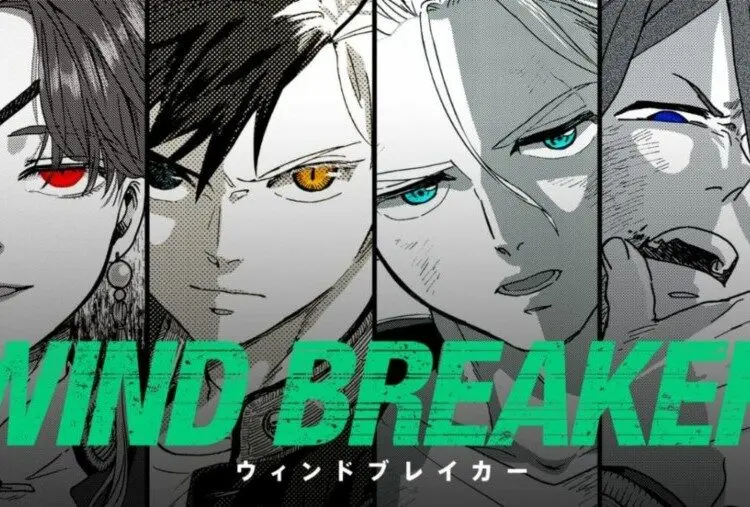The Spring 2025 anime season brings exciting new series and continuations. “Wind Breaker,” first seen a year ago, introduced us to the brawling protectors of the delinquent high school Furin. It`s definitely an anime focused on street fights and neighborhood disputes. The second season premiered in early April, prompting a look into what makes the show appealing and if it`s worth watching.
For those unfamiliar with the first season, here`s a brief overview of the premise. Fifteen-year-old Haruka Sakura is obsessed with fighting. Upon moving to a new city, he enrolls at Furin High School, home to the most unruly students, hoping to find formidable opponents. However, reality presents a different picture. Unexpectedly, the locals don`t fear the Furin students; instead, they value and respect them. The students are recognized protectors of the city, ready to use their fists to deal with anyone causing trouble. Despite his original goal of just fighting to prove himself, Haruka still manages to find opportunities to use his skills.
The first season followed the protagonist as he adjusted to his new school, got to know people, made enemies, and found reasons to clash with gangs from other areas. Sakura isn`t accustomed to being treated kindly. He`s quick to jump into a fight but turns red when someone is warm and friendly towards him. This gives the impression that the main character isn`t sure what he truly wants. On one hand, he wants to achieve everything on his own, yet he enjoys being in company. He wants to be at the top of the school but hesitates to become class representative. The character feels somewhat flat and underdeveloped, distinguished mainly by his unusual appearance, knack for getting into trouble, and creating problems for others.
So, what is “Wind Breaker” *really* about? The main character constantly seeks fights, finds a reason, and engages in combat, often joined by a dozen other students from the school. This anime consists almost entirely of action scenes and seems to have been created primarily for them. The plot is minimal and serves more as an excuse for the fights. Haruka wants to prove he`s the strongest and reach the top. His motivation? Essentially, “just because.”
What about the noble goal of protecting the city? Initially, Haruka had no such intentions. He started patrolling the streets after discovering that all Furin students do it. Locals adore their protectors, trust them, and ask for help when needed. The students not only protect from gangs but also assist with everyday tasks, such as painting over graffiti. What, then, is the central conflict of the story? It`s largely presented as good guys versus bad guys. Some are strong, others are defeated. Added to this are a few dramatic speeches about the power of fists and defending the weak. And that`s essentially the extent of it.
The narrative focuses on territorial disputes and Furin High`s bold motto: if anyone who oppresses the weak dares to cross the city`s boundary, “Wind Breaker” will crush them. Strength is the deciding factor. Everyone views themselves as powerful, but victory determines the truth. The anime consistently draws a contrast between “they and us,” “outsiders and our own,” while simultaneously promoting the idea that nothing significant can be achieved alone and that reaching the top requires earning people`s recognition and respect.
The first season adapted 41 chapters of the manga. The final episodes introduced the “Keel” gang, who were targeting a student from Furin High. The season concluded not with an epic battle, but with the announcement of one. The first-year students from Haruka Sakura`s class are determined not to let their classmate be beaten by outsiders. Together, they prepare to fight the Keel members to teach them a lesson and save their friend.
The second season of the anime begins by adapting chapter 42 of the manga. The students arrive directly at the gates of the Keel gang`s base, eyes burning with determination and fists ready to fight. However, their opponents are much better armed. Spiked sticks and metal bats are a clear advantage, not to mention the sheer number of enemies. Nevertheless, let`s not forget that in action anime of this type, the good guys always prevail. So, neither the number of opponents nor their weapons will prevent the main character and his companions from achieving victory. From the outside, it might look a bit like a chaotic scramble, but it`s highly dynamic. The fight against the Keel members spans two episodes, followed by prolonged scenes depicting emotional struggles, fostering an atmosphere of unity among the first-years, and attempting to create poignant moments. Yes, the second season includes more of this emotional element.
A pleasant highlight of the second season is its musical score. The new opening theme song is performed by the male idol group SixTONES, whom many viewers might discover through watching “Wind Breaker.” The track titled “BOYZ” is energetic and inspiring, with the performers` voices effectively conveying the spirit and dynamism of the series.
So, what makes this anime noteworthy? Similar to series like “Solo Leveling,” “Wind Breaker” primarily relies on spectacular fights and the characters` outward coolness. It`s a decent series for casual, non-demanding viewing if you want to relax after work or school. The anime has a simple but pleasant visual style, and the action scenes are reasonably realistic (aside from the main character`s jumps and spins – he`s quite the acrobat).
“Wind Breaker” is an anime about street battles, verbal sparring, and exchanging taunts leading up to a fight. The series also attempts to insert philosophical discussions about strength, leadership, and camaraderie between the action sequences. However, these attempts feel forced and overly direct, making it arguably more enjoyable to watch only the action scenes rather than the awkward attempts to elicit an emotional response from the viewer. Nevertheless, this remains an anime about fighting, aimed at fans of action series. Your decision to watch should be based on this core aspect.

